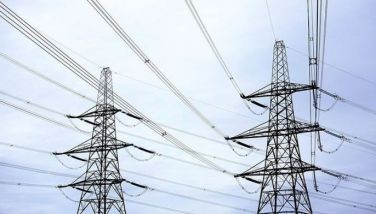Philippines at risk from poverty, economic downturn – WEF

Biggest threats in next 2 years
MANILA, Philippines — The biggest threats to the Philippines in the next two years are an economic downturn and poverty, according to the World Economic Forum (WEF).
The Global Risks Report 2025 released by the WEF showed that an economic recession or stagnation was identified as the top risk to the country in the next two years, based on an Executive Opinion Survey administered from April to August last year.
The government is aiming for an annual economic growth of six to eight percent for this year and in 2026.
For 2024, the government was targeting a six to 6.5 percent growth. From January to September last year, the country’s economic growth averaged 5.8 percent.
The WEF report showed poverty and inequality as the second top risk for the Philippines for the next two years.
The government is aiming to bring down the poverty incidence to a single-digit level of nine percent by the end of 2028.
Poverty incidence among the country’s population was at 15.5 percent in 2023, down from 18.1 percent in 2021.
Other top risks for the Philippines identified in the report are inflation, food supply shortage and unemployment or lack of economic opportunity.
Inflation averaged 3.2 percent last year, within the government’s two to four percent target. It was also lower than the six percent average in 2023.
The country’s unemployment rate declined to 3.2 percent in November last year from the previous month’s 3.9 percent and 3.6 percent in November 2023.
Globally, state-based armed conflict emerged as the top risk that may present a material crisis this year.
Other top risks expected to affect the world this year are extreme weather events, geoeconomics confrontation, misinformation and disinformation, societal polarization, economic downturn, critical change to Earth systems, lack of economic opportunity or unemployment, erosion of human rights and/or civic freedoms and inequality.
For the next two years, misinformation and disinformation were identified as the biggest global risks, followed by extreme weather events and state-based armed conflict.
Other global risks expected in the short-term are societal polarization, cyber espionage and warfare, pollution, inequality, involuntary migration or displacement, geoeconomics confrontation and erosion of human rights and/or civic freedoms.
In the long term or over the next 10 years, the WEF report showed extreme weather events, which are expected to become even more severe, as the top global risk.
Also cited as top global risks in the next 10 years are biodiversity loss and ecosystem collapse, critical change to Earth systems, natural resource shortages, misinformation and disinformation, adverse outcomes of artificial intelligence technologies, inequality, societal polarization, cyber espionage and warfare and pollution.
By identifying risks, the WEF aims to provide leaders with foresight to address emerging challenges to build a more resilient future.
“Rising geopolitical tensions and a fracturing of trust are driving the global risk landscape,” WEF managing director Mirek Dušek said.
“In this complex and dynamic context, leaders have a choice: to find ways to foster collaboration and resilience, or face compounding vulnerabilities,” he said further.
- Latest
- Trending






























